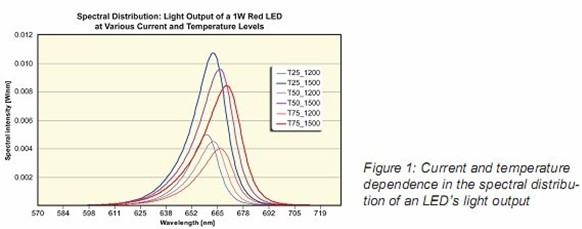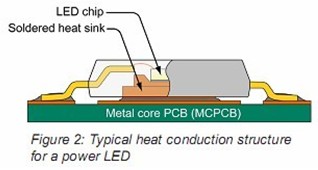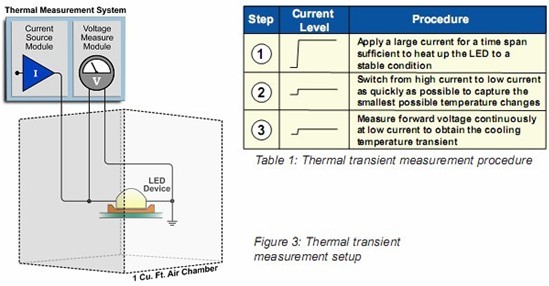Current, color and performance
The light output characteristics of an LED are primarily determined by its operating conditions. An increase in forward current causes the LED to generate more light. However, the current current remains constant and the light output decreases as the temperature of the LED increases. Figure 1 depicts the relationship between temperature, current, and light output. It also describes the offset of the LED-related color spectrum at the peak wavelength. For a single-color LED for general illumination, the peak of the blue spectrum shifts, thus changing the so-called color temperature of the LED. This has an impact on the senses within the LED lighting space.

Like many other products, lighting systems are designed to weigh cost and performance. The power distribution and the resulting heat dissipation requirements are largely determined by the energy conversion efficiency of the LED. It is defined as the ratio of the emitted light energy to the input electrical power. The energy efficiency value is closely related to the performance of another metric parameter. It is an evaluation index about usefulness, which is the ratio of the perceived light divided by the supplied electrical power. Performance is used to evaluate the pros and cons of different light sources. Unfortunately, the performance of LEDs will decrease as the junction temperature of the LED increases. Predicting the output luminous flux of an LED is the ultimate goal of lighting design. Thermal management solutions that provide effective heat dissipation produce more consistent color flux in LED applications.
Heat is transferred from the LED package chip and the relevant data is provided by the supplier. A common thermal structure is shown in Figure 2. Approximately 50% of the junction-to-ambient thermal resistance of an LED lamp is caused by the LED package.

Traditional LED standards need to be further refined. Relevant industry standards are being drafted, but LED suppliers still define the thermal resistance of their products and other temperature-related characteristic parameters in different ways. For example, when the LED thermal resistance is determined to ignore the radiated light power as a condition variable, the resulting thermal resistance value will be lower than the actual thermal resistance value. If the actual thermal resistance is higher, the corresponding LED junction temperature will be higher, resulting in insufficient luminous flux. Therefore, it is very important to understand the actual LED thermal characteristics.
   Measurement: Temperature is more important than luminous flux
Assume that the temperature of the LED is linear with its forward voltage drop across it. Therefore, the change in temperature can be accurately derived by observing the voltage drop. In order to perform this test well, the hardware and software of the test system must meet certain requirements. For example, Mentor Graphics' MicReD commercial automated test system is a typical device that meets these requirements.

Figure 3 depicts a simplified diagram (disproportionate) of such a measuring device. The first step in the measurement is to determine the temperature sensitivity of the forward voltage at a very small current, which can be the sensor or the measured current. After that, the LED is applied with a large current to make it hot. Then stop applying a large current, and a small sensor current appears again, while measuring the forward voltage with a high sampling rate until the LED junction temperature is completely stabilized. Due to the fast thermal response of the LED, the measured hardware device must be able to capture temperature (voltage) changes within a few microseconds after the LED current ceases to be applied. As shown in Figure 3, the LED being measured is in an enclosed space that is the JEDEC standard natural convection chamber that provides an environment with no airflow. A similar device can also be provided by the T3ster. Table 1 summarizes the test steps.
